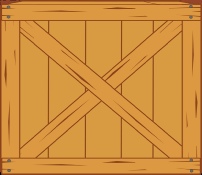© 2014-

Three Mile Limit
The 3 mile limit used by offshore stations to enable them to operate outside of the law of a sovereign country was arrived at because that was the extent has its origins in the capability of of the reach of cannons fired from land -
However, there is some technical dispute over the relevance of this premise because, from a height of a few meters above sea level (e.g. a coastal fort), the horizon is only about 3 nautical miles (5.6 km) away due to the curvature of the Earth, meaning more distant targets would not be visible anyway.
It has also been suggested that the three mile limit derived, in some cases, from the general application of ‘the league’ (a common unit of measurement at sea) rather than from the range of cannon.
A workable formula for defining territorial limits at sea was put forward by Dutchman. Cornelius van Bynkershoek in his paper ‘De Dominio Maris’(1702). This formula restricted maritime dominance to the actual distance within which cannon range could effectively protect the country in question. Furthermore his formula stated that all waters beyond this national boundary were considered international waters, free to all nations, but belonging to none of them.
Most maritime nations adopted this principle, which developed into a limit of 3 nautical miles (5.6 km).
In the early 20th century, some nations expressed a desire to extend their national claims at sea to include mineral resources, protect fish stocks, and provide the means to enforce pollution controls.
Using the customary international law principle of a nation's right to protect its natural resources the USA extended its control in 1945 to all the natural resources of its continental shelf. Other nations were quick to follow suit and between 1946 and 1950, Chile, Peru, and Ecuador extended their rights to a distance of 200 nautical miles (370 km) to cover their fishing grounds.
Meanwhile other nations also extended their territorial limits to 12 nautical miles (22 km) so that by 1967, only 25 nations still used the old 3 mile (4.8 km) limit, while 66 nations had set a 12 nautical mile (22 km) territorial limit and eight had set a 200 nautical mile (370 km) limit.
By May 2008, only two countries still used the 3 mile (4.8 km) limit -
Britain's own territorial limits were extended to 12 (22km) miles in 1987 by virtue of the Territorial Sea Act, requiring Radio Caroline to move its ship, Ross Revenge, to a new location at South Falls Head. The then silent Laser Hot Hits ship, Communicator was also moved outside the new limit at that time.


HOLD Noun -







Basement
Back to







26